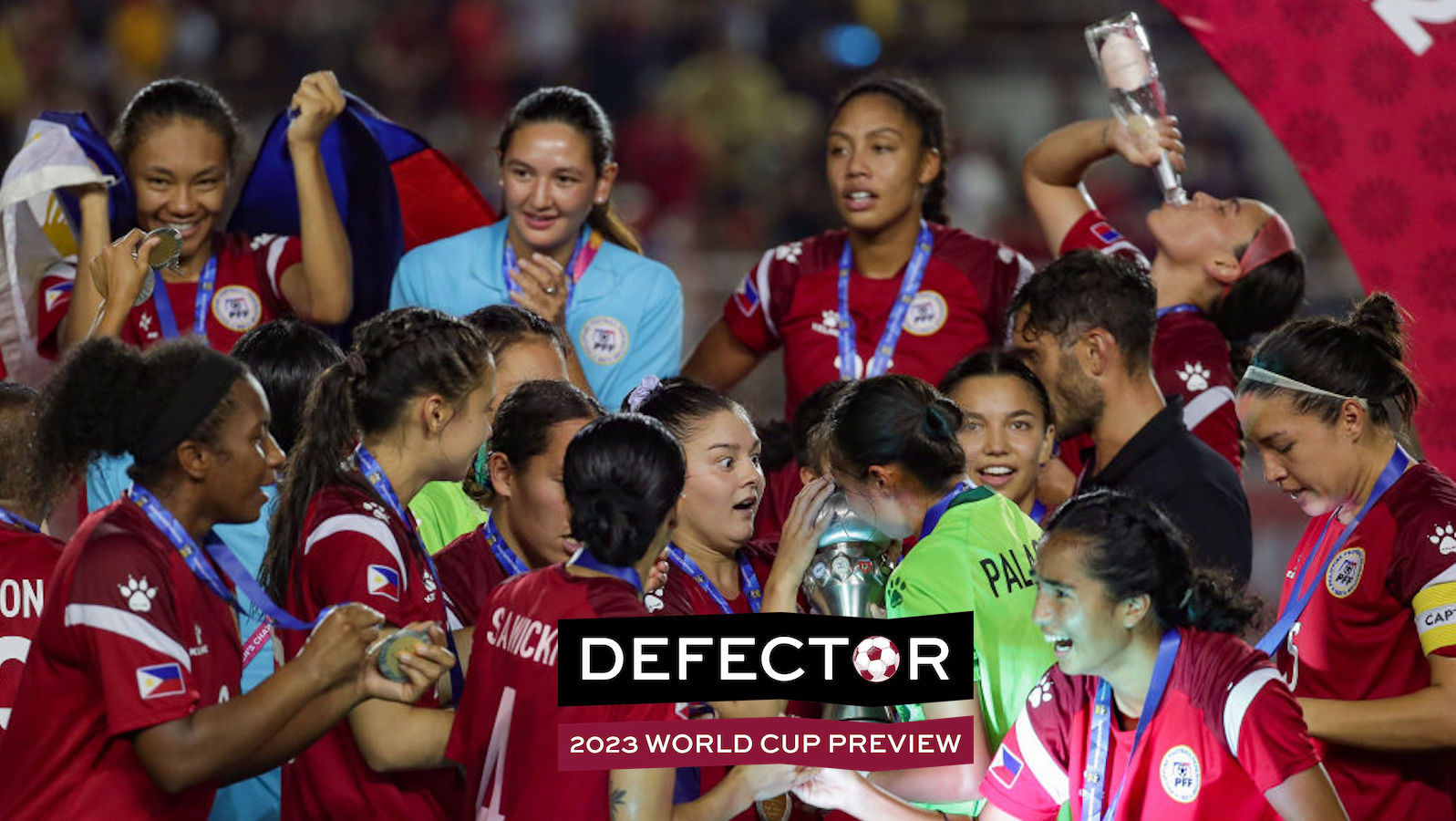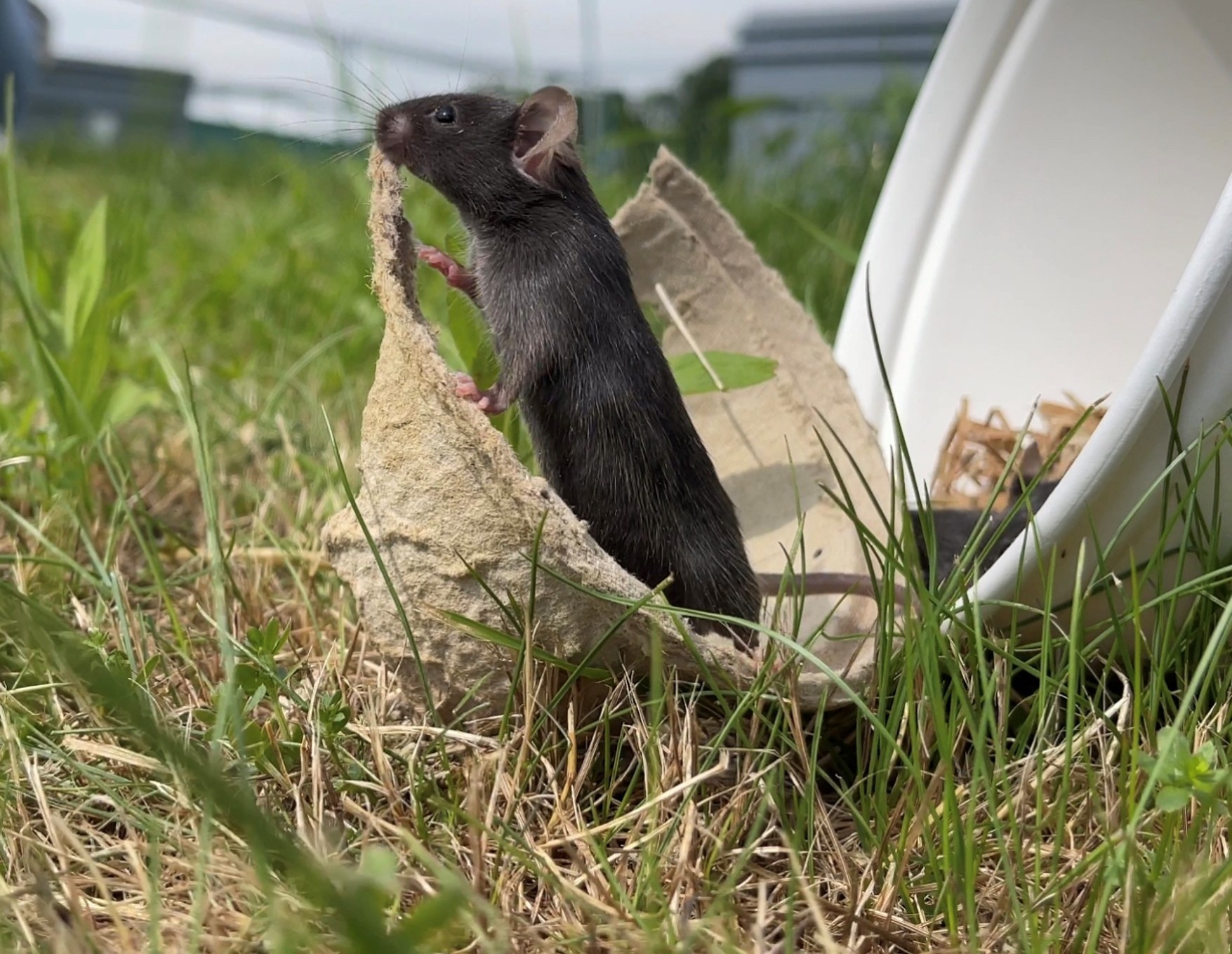It’s almost time for the 2023 World Cup. To help get you ready, we will be providing you with precious information about every team in the tournament. You can read all of our team previews here.
Everyone give three cheers for the Philippines women's national team, which is not an objectively good team by any measure but which has nevertheless been on an impressive run over the last few years. You can chart the Filipinas' recent success by the steps they have taken into previously untrod ground. In 2022, this team progressed to the semifinals of the Asian Cup for the first time in its history. They followed that up by winning the 2022 AFF Women's Championship, a competition in which their previous high mark of success was a bronze medal. That same year also saw the Filipinas win their first game on European soil, a 3-0 win against Bosnia and Herzegovina in a friendly. And now here they are, the highest they've ever been in FIFA's rankings (46th in the world) and ready to play a World Cup game for the first time in their 42-year history.
How does such a small country go through such a meaningful transformation—they were ranked 74th by FIFA in 2018—in such a short period of time? It helps to make yourself available as a landing spot for an accomplished but potentially disgraced manager who is suddenly short on job opportunities.
Alen Stajcic was the manager of the Australian women's national team during the height of that team's success. Along with Sam Kerr, he led the Matildas to the quarterfinals of the 2015 World Cup, the quarterfinals of the 2016 Olympics, and the country's highest ever FIFA ranking, at No. 5 in the world. And then, just a few months before the start of the 2019 World Cup, it all went to hell. Stajcic was fired without warning, and what followed was a long and confusing saga that hasn't given anyone much of an idea about what exactly led to his firing.
A handful of players, including Kerr, released statements supporting Stajcic after he was canned by Football Federation Australia (FFA), but his departure also left behind a flurry of vague reports about a toxic culture plaguing the team. An FFA board member named Heather Reid later told the press that people "would be shocked" if they knew all the details behind Stajcic's firing. Stajcic then sued the FFA, which led to the federation agreeing to a settlement with him and to Reid not only apologizing to Stajcic, but stating that his contract being terminated was not due to "any misconduct on Mr. Stajcic’s part." How thoroughly you think that statement scrubbed Stajcic's reputation probably depends on how much stock you put into statements that are written by people whose lawyer is pointing a gun at them.
So anyway, that's how Stajcic, a truly accomplished soccer coach on the international stage, ended up taking charge of a runt like the Philippines. Stajcic took the job in October 2021, and since then he's been overseeing a Marcelo Bielsa-esque renovation project. In an attempt to streamline the federation's playing philosophy and development process, Stajcic took over management of both the U17 and U20 teams. Like his predecessors, he also got busy searching the diaspora for talent, particularly in Australia and the U.S. That's been hard work, as Stajcic recently pointed out in an interview that not only is a Philippines passport is difficult to obtain, the federation also only has "one lawyer around the world." Despite the legal red tape, Stajcic will be going to the World Cup with a squad of players who were mostly born outside the Philippines, many of them in their teens or early 20s. Simply reaching the World Cup is a huge accomplishment for this team, but Stajcic and the federation seem to be setting things up to ensure that this won't be the Filipinas' last trip to the big tournament.
Who Is Their Star?
We will grant star status to Quinley Quezada, an attacking midfielder who made her debut with the senior team in 2018, and has 48 caps and 22 goals through her career in the national team system.
The 26-year-old played high school soccer in California, went on to star on the college team at UC Riverside, and then pursued a pro career that sent her to such far-flung leagues as the Taiwan Mulan Football League and the WE League of Japan. She currently plays her club soccer for Red Star Belgrade in the Serbian Women's Super League.
Now, I know what you are thinking. You are thinking that there is no way in hell, given her professional history, that I have any meaningful highlights of Quezada to show you. Well that's where you'd be wrong, buddy, because as every World Cup team preview writer worth their salt can tell you, the best place to find highlights of players from crappy teams is on those players' very own YouTube pages. And would you look at this: we have nearly eight minutes of tape to consume, courtesy of Quezada herself.
She's doing a lot of good stuff in there—taking up good positions in the midfield, making lots of runs into the box, shooting without hesitation, and demonstrating a variety of finishes. Here's hoping that within a few weeks Quezada will be able to upload at least a 30-second video titled "Quinley Quezada- World Cup 2023 Highlights" to her account.
Tell Me About A Cool Youngster
There's no shortage of options here, given how much of an emphasis the Philippines federation has put on recruiting young players. Isabella Pasion, a 16-year-old (!) from Texas has five caps and was named to the provisional 29-person roster that was released earlier this month, but it might be unwise to bank on a 16-year-old being among the final 23 players who will go the World Cup. So instead we'll go with Carleigh Frilles, a 21-year-old from Virginia who plays college soccer at Coastal Carolina University and has been in the Philippines youth system since she was 14 years old.
Frilles played some important minutes in the Filipinas' run through the 2022 Asian Cup, and then spent the rest of the year racking up goals in a series of low-stakes friendlies. Frilles came to the team as a midfielder, but during those friendlies she was deployed as a No. 9, which seems to have unlocked a new set of possibilities regarding her place in the team. "Recently I've definitely been more comfortable playing the 9," she said during a recent interview with Futbol Brew. "I have a newfound love for playing the 9 ... I did enjoy playing the 10, but once I started scoring a lot of goals at the 9 I was like, 'Yeah, I wanna keep playing the 9."
(Before you ask: Yes, these highlights are from Frilles's personal YouTube account.)
Frilles will have to compete for minutes at the striker position with fellow American Sarina Bolden, but her speed through the middle makes her an attractive option for a team that likes to play forward quickly and create goals in transition.
Who Is Their Enemy?
I declare the difficulties of translation and being understood as an enemy of the Philippines women's national team. The team's current official nickname is the Filipinas, which is a fine if uninventive moniker for them to carry into the World Cup. Unfortunately, Filipinas becomes a lot less cool when you learn about the previous nickname that it replaced: the Malditas.
According to this rundown from FIFA, there isn't really a clean translation for "maldita" from Tagalog to English. It can be used as an intensifier, the same way "fucking" gets used in English ("We shipped five goals to Iceland" vs. "We shipped five fucking goals to Iceland"), and also to describe someone as "feisty" or "bratty." Translated from Spanish or Portuguese, it means "damned," as in literally damned to Hell.
It's not totally clear when Malditas first caught on as a nickname for the national team, but a former player explained in 2012 interview that it was given to the team by former manager Ernie Nierras in 2005, who found it a fitting nickname for a team that was feisty and never backed down from a challenge. Since then, the federation has gotten increasingly uptight about the use of the nickname, and in 2022 announced that it would officially be replaced by Filipinas.
Fans and players seem to have preferred the old nickname, and it's not hard to see why. The Filipinas sound like a team that's eager to meet their opponents in a fair and honorable athletic competition designed to enrich the spirits of all those who take part. But the Malditas? That sounds like a squad of 11 freaks who are going to drag you onto a lake of fire and leave you there to burn. I know which one I'd rather root for.
National Folk Hero Who I Think Is Cool
We're going with Bernardo Carpio here, who is an Atlas-like figure in Filipino folklore, but with a much cooler name. There are several different versions of Carpio's legend, but the most basic goes like this: He's a guy (possibly a giant) who is stuck between two big rocks in the Montalban mountains.
How did he get stuck between those two rocks? Not important. What's important is that while he's stuck there he is either A) preventing the Philippines from being ravaged by earthquakes by holding the two big rocks apart, or B) causing an earthquake every time he shrugs his shoulders in an attempt to escape his predicament. Either way, he seems to have a lot of patience, and that's a trait I can admire.
Scran Or Not Scran: National Dish Edition
The Philippines might have the most scran-worthy cuisine of any nation in this year's tournament. Adobo chicken, roasted suckling pig, various pork- and beef-based stews—these are the types of scran that rain-soaked attendees of a Boreham Wood vs. Bromley match can only ever dream of tasting.
One of the more satisfying meals I had this year came from a Filipino deli not far from where I live. It was twice-fried chicken with jasmine rice served on a bed of garlic popcorn.

If that's not Scran As Hell, then I don't know what is.
What Would A Successful World Cup Look Like For This Team?
I think it would be wise for this team to set their sights on a relatively modest goal: don't get blown out. They will face two extremely difficult opponents in their group-stage matches against Norway and Switzerland, and they run the risk of being one of those teams that gets remembered for losing 8-0 in front of the whole world. But these Maldit—sorry, Filipinas, aren't total pushovers. Back in February, the Filipinas competed in the Pinatar Cup for the sake of testing themselves against European competition. Aside from a 5-0 loss to Iceland in their final game, they mostly held their own, losing 2-1 to Scotland and 1-0 Wales. Going to a World Cup and actually winning a game can alter a country's soccer destiny, but so can going to a World Cup and simply proving that you belong.






